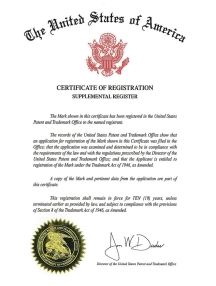 Domains and trademarks are an issue for both existing businesses and new start ups. Most businesses and also individuals wantsto have their own domain.
Domains and trademarks are an issue for both existing businesses and new start ups. Most businesses and also individuals wantsto have their own domain.
A domain is a name which distinguishes IP addresses. For you to recognize a particular web page, domain names are needed. Every domain name has a suffix after it to indicate its category or what they call “top level domain,” (TLD). Some of the common categorical suffixes are:
- .gov -denotes government institutions
- .ca -denotes Canadian territories
- .edu -denotes educational institutions
- .net -denotes network associations
- .mil -denotes the Military group
- .com -denotes commercial establishments
- .me – denotes personal use
A lot of people wish to secure their own domain name. While some wish to do this for personal use, the majority use a purchased domain as a marketing tool for their business.
If you are choosing a domain name for business use, you must first pick an identifier from the above-mentioned suffixes. For businesses – selecting the .com is the best choice, For personal use – select .me.
For the domain name you can:
- Choose your own business name. For instance, your business name is “Fast Printing” then you can have it as a domain name. This is an essential first step to protecting your brand online.
- Choose a domain name for every trademark you own.
- Choose a new domain name (optional after steps 1 & 2) . If you decide to choose a new domain name, make sure that the name itself is “catchy” and your target market will easily remember it. In addition, your new domain name should have a link to the product or service you are offering. Most importantly, it should not have the same domain name as others.
You can have more than one domain name assocaited with your business – particularly if you have multiple product lines or services and these have separate trademarks.
Do not select a domain name that is the same as an existing trademark. For businesses, who have an existing business name, the chances are minimal (but still possible) that your proposed domain name conflicts with an existing trademark. Note – if you have an issue with the domain name you may also have an issue with your business name as well. In which case, this should be referred to a trademark attorney asap. A trademark online search is recommended
There are business owners who are not satisfied with having their own domain names. Some want their domain name to be trademarked.
Who says you cannot make your domain a trademark?! You can.
While some people argue that it is difficult to make your domain a trademark, there are those who disagree. With proper rules to follow you can make your domain a trademark. If your doman name is a personal name then you may be able to trademark a name.
Select a domain name that is distinct. By doing so, you will not encounter much difficulty in protecting your domain name as trademarks. Additionally, domain names that employ geographic identifiers or surnames are not likely to be given trademark protection.
You need to verify your domain name. There should not be two of the same domain name, if this is the case then your domain name trademark application will be disapproved. Hence, it is highly recommended that you undertake a thorough trademark search to see if your domain name has not yet been taken.
After you have gone through with your “domain name search,” and you found out that your domain name is exclusive for your use only, then the next step is to trademark your domain name
Some say that it is not necessary to have a domain name trademarked and registered. However, the majority of entrepreneurs recommend that you trademark and register your domain name. By doing so, you will have authority to implement your rights when someone attempts to use your domain name.
To help you with the registration process, it is recommended that you can seek professional help from a trademark attorney who specializes in trademarking and who is also knowledgeable about the domain name registration.
A domain name can be trademarked with the United States Patent and Trademark Office (USPTO). You need to obtain an application from the said office or better do the trademark filing online. Once you have completed an application form and complied with the requirements given by the office then you can submit it for evaluation.
The evaluation may take months after you will be given a result. As you wait for the decision, you may temporarily use the TM symbol to notify the public that you have rights over the domain name. Once the decision has been out and your application was approved then you can now lawfully use the trademark symbol, “®”.
Once you have registered for your domain name as a trademark, you will have ten years protection. However, during the fifth or sixth month you will be asked to file an affirmation to continue the registration. If you do not file within the specified time, then your registration may be withdrawn.
There is no problem if you want to trademark your domain name; all you need to do is undertake the necessary steps to research both trademarks (a trademark search) and a domain name search. Having a domain name that is trademarked provides protection from others who may seek to register domains for their own benefit that rely on the brands, marketing and goodwill of your business.







